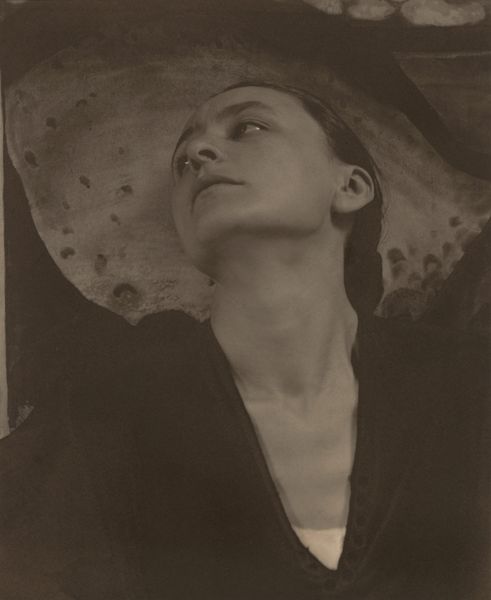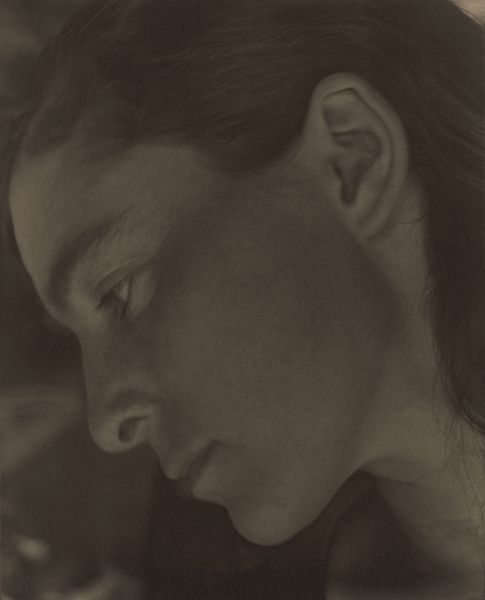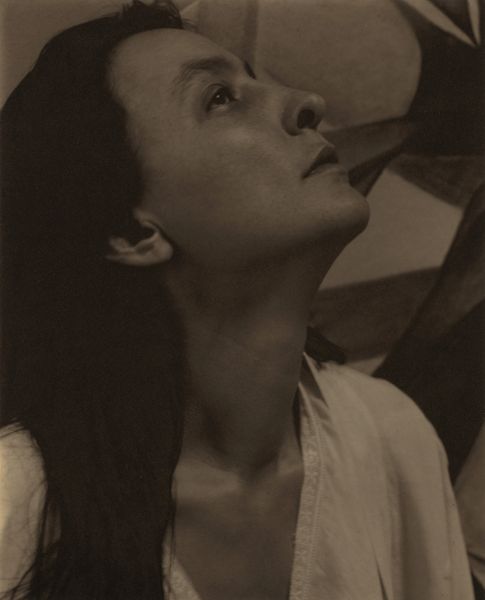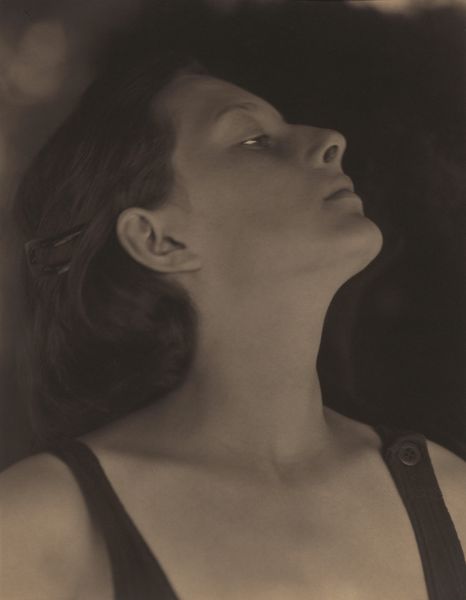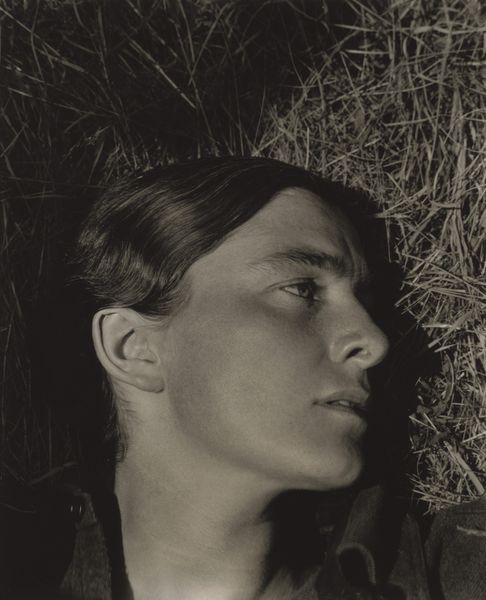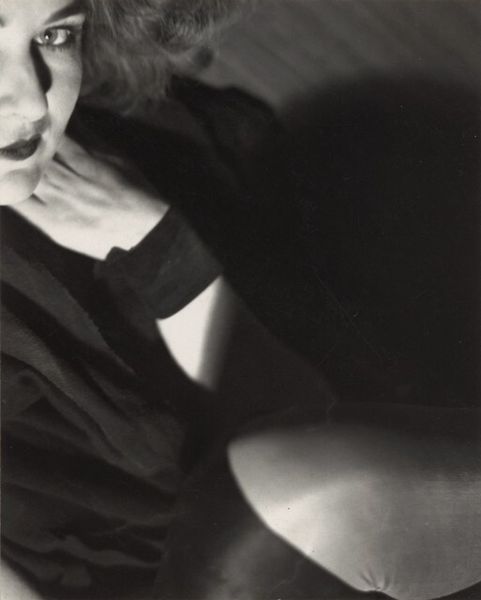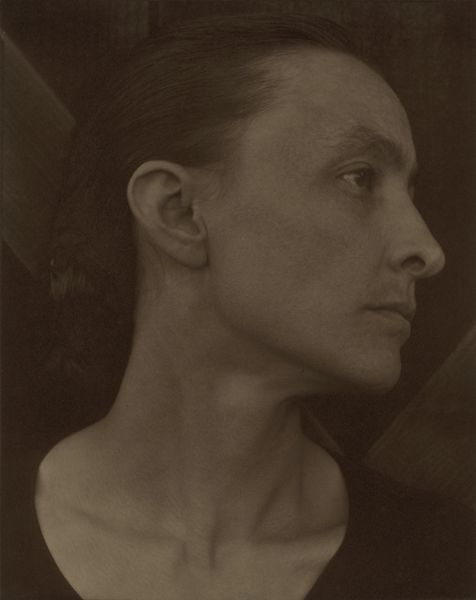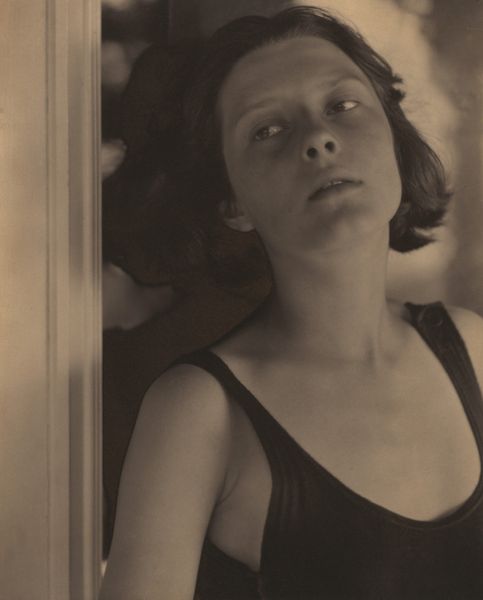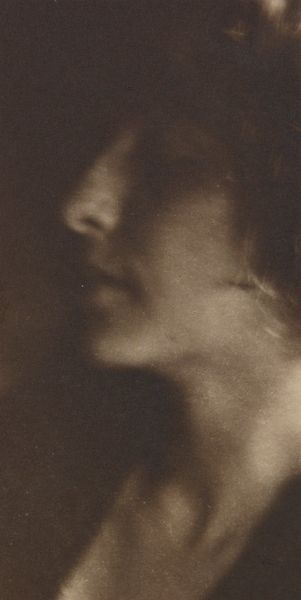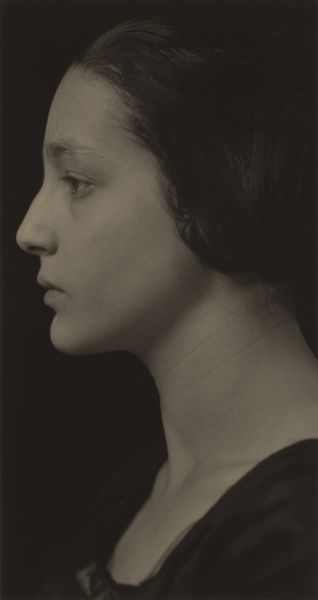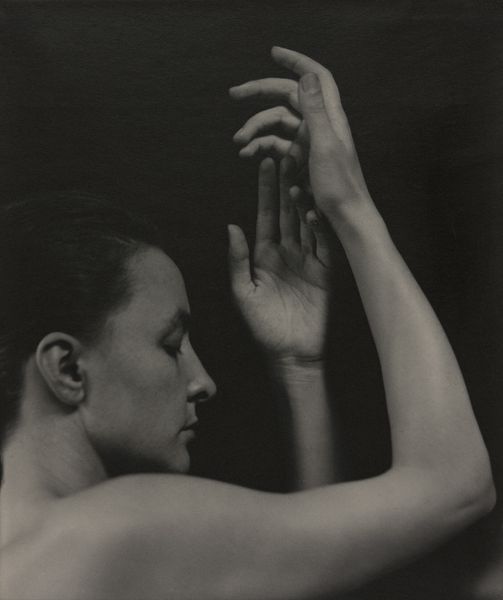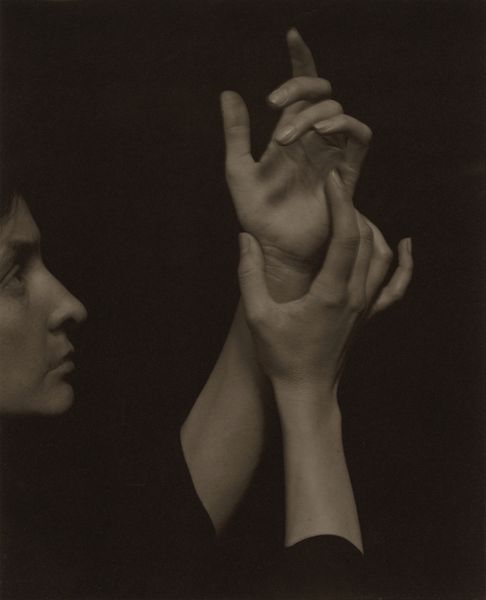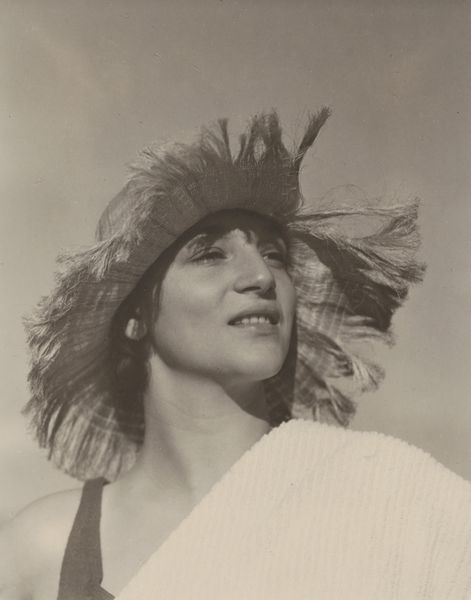
photography
#
portrait
#
portrait image
#
pictorialism
#
photography
#
ashcan-school
#
modernism
Dimensions: image: 23.8 x 18.8 cm (9 3/8 x 7 3/8 in.) sheet: 25.4 x 20 cm (10 x 7 7/8 in.)
Copyright: National Gallery of Art: CC0 1.0
Editor: This is Alfred Stieglitz’s photograph, "Margaret Treadwell," from 1921. It's a stunning portrait; the tones are so rich and velvety. I'm really curious, what draws your attention when you look at it? Curator: I'm struck by how Stieglitz's pictorialist approach elevates the act of photography itself. He manipulates the processes to give this photo its texture. The materials – the photographic paper, the chemicals used in developing – these become vital elements. The focus is less about representing Margaret and more about the constructed nature of the image. Editor: So, you see the hand of the artist very much in the final product? Curator: Exactly. Think about the labor involved. Each print was carefully crafted, resisting mass production. How do you think the rise of consumer culture influenced Stieglitz’s return to handcrafted artistic forms like photography, over mass media, during that period? Editor: It seems like he’s positioning himself against it, emphasizing artistic skill. He values making a unique artwork. Curator: Right. And the Ashcan School influences it too. Photography's new role captured images of the rising city, and everyday citizens and their daily lives became visible to the public eye. How does capturing Margaret, versus the working class, challenge that social expectation of the medium? Editor: Hmm, interesting. I guess it feels more staged and less like a candid shot of daily life than much of the work associated with that social agenda, since she’s posing. The intentional crafting of the image does add another layer. Curator: Precisely. And reflecting on materiality really gives us insights into Stieglitz's aims, as well as social concerns happening in the 1920's. Editor: I never thought about photography having texture. That really makes me want to rethink how I look at art, period.
Comments
No comments
Be the first to comment and join the conversation on the ultimate creative platform.
